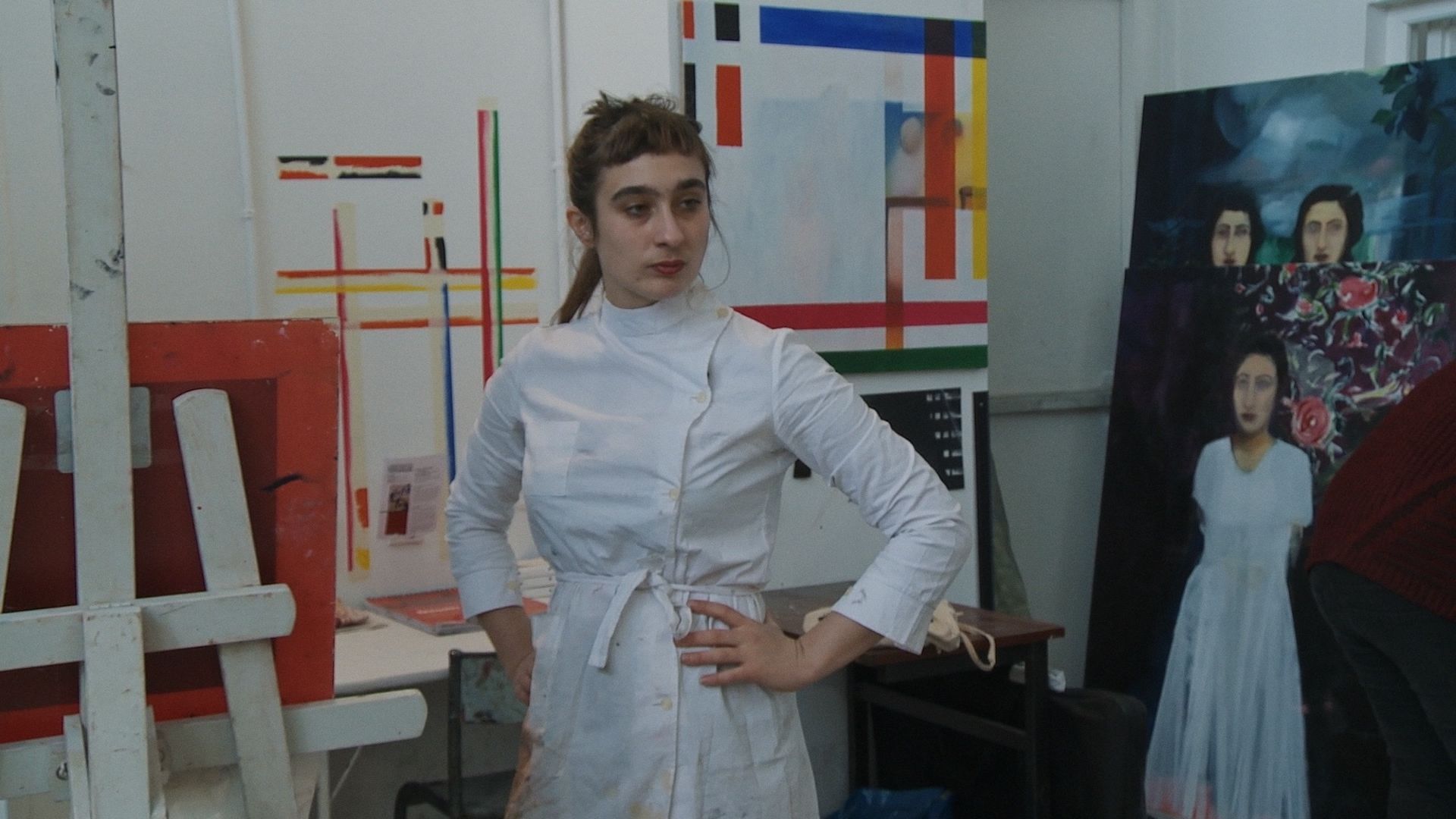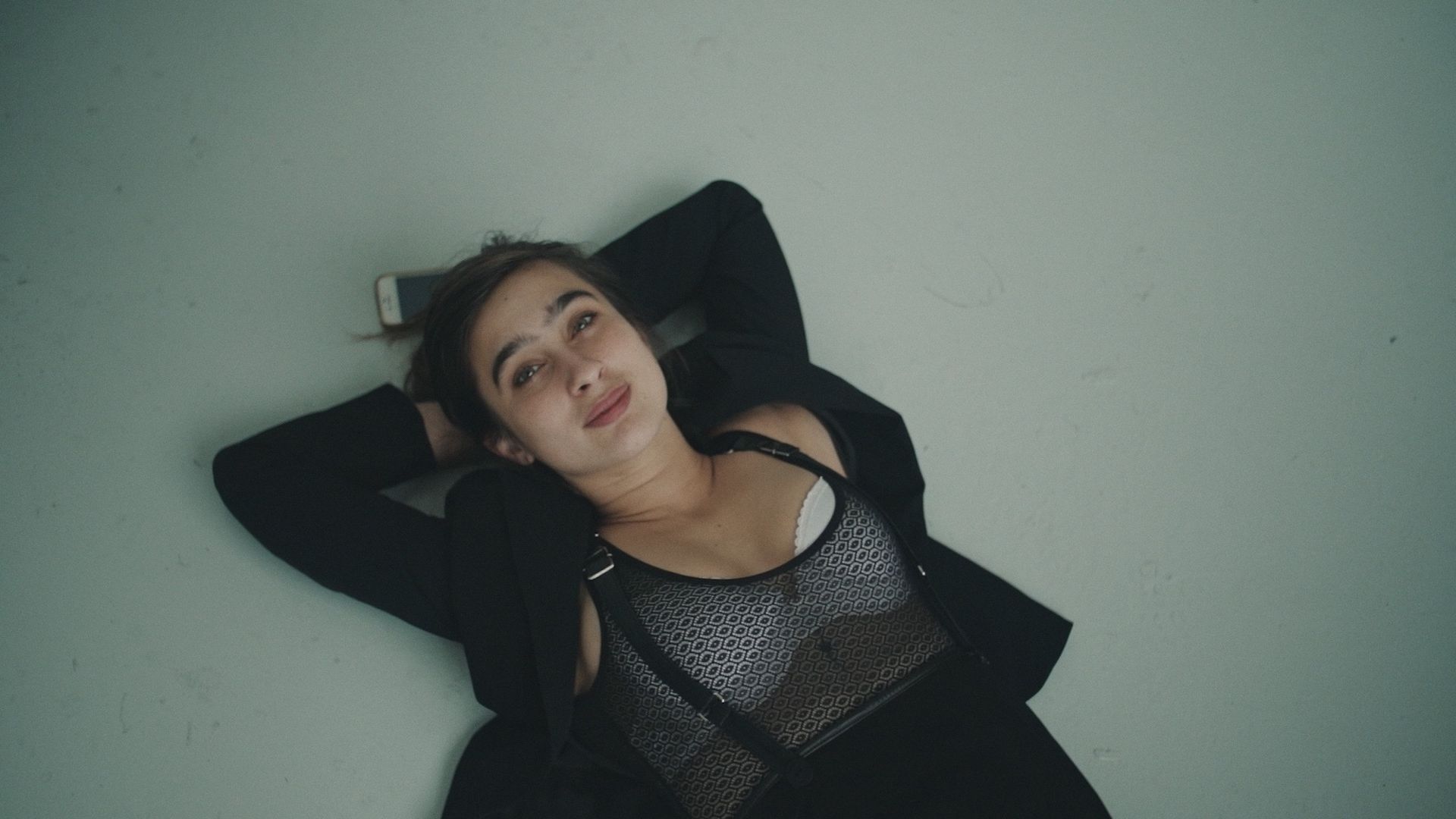“Whether I captured Apolonia with my camera or whether she captured me in her theatre, I still don’t know,” says Lea Glob, the writer and director of a new documentary that upends distinctions between artist and object, the viewer and the viewed. A cinematic portrait of a portrait painter, Apolonia, Apolonia (2022) chronicles 13 years in the life of Apolonia Sokol, an ebullient, irreverent artist raised by hippie thespians in Lavoir Moderne Parisien, a washing hall turned experimental theatre in the working-class 18th arrondissement.
Punctuated by Glob’s quiet Danish voiceover, the film provides a verité take on both Sokol’s life and an underground art world imperilled by intensifying market forces. How can an artist—specifically a woman artist—make it these days without selling her soul? And what must she sacrifice to do so?
The presence, and power, of the female gaze—directed at others and at oneself—dominates throughout. In the opening shot, Sokol stares into an oval mirror and snips her dark bangs with a pair of shears, bleach cream spread above her frowning mouth. Accustomed to being in front of the lens from infancy (her birth is literally caught on tape), she displays a patent absence of vanity and self-consciousness, a refreshing turn from the “authenticity” paraded on social media.

A scene from Lea Glob’s Apolonia, Apolonia (2022) Courtesy of Danish Documentary Production
Glob, who grew up in rural Denmark, serves as a foil to Sokol’s exhibitionist persona. “No motif has caught my eye as she did,” the director says. “She seemed familiar and like a stranger at the same time.” Sokol is portrayed across a sweeping range of situations and life chapters—from receiving the news that she’s getting dumped to telling her Polish grandmother that she is not interested in having children.
Many films aim to capture the grandeur of being an artist, but few capture the reality that being an artist is less defined by grand epiphanies and instant validation than by the gruelling practice of trying things out, failing and trying things out again, all while managing to feed, clothe and house oneself. Sokol is depicted as feeding and housing not just herself, but a community of artists and activists that squat at the Lavoir Moderne, including members of Femen, the Ukrainian feminist revolutionary movement headed by Oksana Shachko, who becomes Sokol’s platonic living partner.
The first half of the film chronicles Sokol’s struggle to keep the theatre that her parents started. Between threats of eviction, arson and a violent attack by an audience member during a performance, Lavoir Moderne’s bohemian utopia crumbles before our eyes. Glob refrains from excessive exposition, such that the series of events speak for themselves: Sokol doesn’t receive the prestigious exhibition prize she aspires for at the prestigious École des Beaux-Arts; she is pressured to churn out paintings as rapidly as possible by the Los Angeles-based dealer and collector Stefan Simchowitz.
Whether she is caring for depressed, anorexic Shachko, or cooking for the friends whose portraits she paints, Sokol comes across as an artist who cares for other humans as attentively as she regards her canvases. So, too, does Glob grow to genuinely care for her subject, whose financial and psychological precarity for much of the film seem to intensify by the day.

A scene from Lea Glob’s Apolonia, Apolonia (2022) Courtesy of Danish Documentary Production
If anything is clear during the two hours we witness Sokol’s peripatetic moves between Paris, New York, Los Angeles, Denmark and back, it’s that her work cannot evolve under draconian labour conditions. Artists are not machines; they break down, expire, need naps and smoke breaks to prevent collapse. Nor are artists “brands”—or, if they are, they are so only at the expense of their own sanity and integrity. In one of the most transgressive—and hopeful—moments of the film, when she is living in Los Angeles, Sokol risks arrest by disrobing in front of Paul McCarthy’s giant butt plug sculpture. “Fuck America,” she says, before pulling a nude back bend in the park.
At that same time, the film never capitulates to cynicism; nor does it kowtow to the pat redemption of the power of art. Glob persists in making—and finally finishing—the film after dwindling funds and her own brush with death during the birth of her son. The camera hovers over Glob as she gently smiles, her face buried in hospital tubes as her newborn snoozes on her chest.
Apolonia, Apolonia honours the burden of making art in a body that itself has the power to reproduce—and destroy itself in doing so. “The truth is, I never had control,” Glob says toward the end of the film. Both subject and object of the gaze, the two women anchor what amounts to a deeply moving feminist excavation of what it means to make art in order to survive, and survive in order to make. “I can’t separate what I do and what I am,” Sokol tells Glob in Danish. “I can’t tell the difference between my identity and my work.”
Watch the trailer for Apolonia, Apolonia:
- Apolonia, Apolonia, 10 November at 3:15pm, Doc NYC, IFC Center, New York






